Hi, and welcome back to the second video in this lesson series on how to draw the human figure.
By the way, if you haven’t watched the first video yet, I recommend that you do that right now and then come back to this one.
To watch the first video, just click on the link below…
Lesson 1 – The Figure Drawing Success Formula
Just as a quick recap, in the last video, we talked about the big reason why so many artists struggle with learning figure drawing.
I told you about the story of my co-instructor Michael and how he really hurt his long term success by skipping over the fundamentals.
And I also hinted at what I believe to be a big secret to your success in figure drawing… which is a structured step-by-step approach to learning that’s designed to teach you a number of critical skills, each one building on the last.
So in this video, we’re going to dive deeper into this “structured approach” and I’m going to reveal the first ingredient in our figure drawing success formula.
And that is…
PROPORTION!
Not surprisingly, proportion is one of the most important skill to develop. Until you really understand how to draw human proportion, you drawings will never look right.
It’s the core foundation that everything else we will learn will be based on.
But for some reason, this is also the biggest sticking points for most beginners. But today, we’re going to fix that!
I’m going to show you a simple drawing exercise that will help you make sense of proportion and allow you to really lock in that knowledge and make it a part of you.
Let’s go over to the drawing table and get to it!
So the key to this exercise to to construct a basic figure completely from scatch. By doing this, it’s going to help you to understand the rules that governs how a human body is put together.
And it’s going to help embed all those rules of proportion into your mind and make it second nature.
So let’s begin.
Take out a piece of paper and draw a vertical line like the one below. This line will represent the height of our creation.
Now, locate the mid-point of this line and put a small “X” there. This will mark the location of the figure’s groin.
Next, put a dot at the mid-point of the UPPER section of our vertical line. This point will indicate the bottom of the pectoral muscle.
Then, divide the UPPER portion of that section in half and put a dot there. This point will mark the bottom of the chin.
Now, divide the LOWER portion of that section in half and put a dot there. This point will mark the belly button.
Next, go to the lower portion of the vertical line and put a dot at the mid-point there. The figure’s knees will be slightly above this point.
There. We now have an outline of where everything should go. Now let’s start filling it in.
First draw an oval shape from the first (top) point to the second point. This will be the head of our creation. Notice that this figure is 8 times as tall as it’s head. So every figure that we draw, will be eight heads tall. We will use the height of the head again throughout the figure as a measuring unit.
Now, go down to the dot that marks the bottom of the pectoral muscle and put one dot on each side of it. These two dots should be level with the center one and they should be equally spaced with one head length between them. The two dots will be our figure’s nipples.
Then find the mid-point between the bottom of the pectoral muscle and the chin and draw a small V there. This will be the clavicle bone.
Next, find the mid-point between the chin & the clavicle and this will be the beginning of the chest cavity. Then, lightly trace an oval between this new point and the naval. The oval should be slightly wider than the space between the two nipples.
Once complete, find the points on the bottom half of the oval that is vertically aligned with the nipples. Now erase the rest of the oval that is below these points. Now connect the openings of the oval with the pectoral dot using slightly curved lines.
OK, now go to the navel and slightly below that point, put one dot one each side. These dots should be vertically aligned with the nipples. These are the love handles and we will connect them to the crotch using slightly curved lines like so:
Then divide the segment between the crotch and the navel into three parts. Find the mark at to top of the lowest section that you just created and slightly below that, draw one dot on each side. Again, these dots should be vertically aligned with the nipples. These are the leg joints.
Next, draw two VERY slight S shaped curves that stretch from each the leg joints to the bottom of the figure. Obviously these are the legs. The line should start to curve inward near the point marked for the knees. Now draw a flat right triangle at the end of each of these S shaped curves and they will be the feet.
OK, next draw a dotted line that connects the navel to left nipple and extend the line past where the shoulder should be. Do the same for the right nipple. The two lines should form a big dotted “V” shape.
Now look at the V you drew earlier that marks the clavicle. Begin a line from the tip of the V on the left side going toward the dotted V line. Mark the point where they intersect, this will be the shoulder joint. Do the same for the opposite side. This will form the figure’s collar bone.
Then draw a slightly curved line from the left shoulder joint that extends down to the crotch. Repeat on the other side. These lines will represent the arms.
And finally draw ovals at the end of these two lines and those will be the hands.
Hooray! We’re done!
There you have it. We’ve just created our own human body from scratch, complete with it’s own rules and measurements.
Congratulation! You now know more about drawing human proportion than 90% of beginner artists.
Now it’s time to imprint what you just learned into your long term memory.
Research studies have shown that when we are first exposed to new information (lectures, articles, tutorials), the vast majority of that knowledge slips out of your short term memory within the first 30 minutes.
But there an easy way to remedy this problem and that’s by employing a technique called, “Spaced Repetition”
It’s basically the idea that reviewing a piece of new information over a period of time will cement it into your mind and dramatically increase retention.
So here’s your homework for today:
Immediately after watching this tutorial, take out a clean piece of paper and repeat the exercise we just did.
Try remember as much on your own as you can. Even when you can’t immediately recall something, try for a while.
By putting in effort to remember rather than just passively referring back the the lesson, you’ll actually make the information stick much deeper.
And when you really can’t remember, go ahead and refer back the this lesson.
Then repeat this again 30 minutes later. Then one more time 1 hour later. And finally once more the next day.
By doing this you will solidify everything you’ve learned and lock it into your long term memory.
Oh and by the way, you can apply this concept to anything you learned for maximum effectiveness.
Of course, there’s a lot more to learn about human proportion, but this exercise should give you a nice head start.
In tomorrow’s lesson, we’ll learn about how to apply perspective your figure to make it look more 3 dimensional and interesting.
So be sure to check your email inbox for that lesson from me tomorrow.
If you’re watching this and you aren’t subscribed to my free newsletter yet, be sure to do that now so you won’t miss out on future lessons.
It’s completely free and only takes 30 seconds.
Just go to mydrawingtutorials.com/join and then enter your email to sign up!

![Figure Drawing Lesson Series [1 of 8] – The Key To Drawing The Human Figure](https://mydrawingtutorials.com/wp-content/themes/Extra/images/post-format-thumb-text.svg)

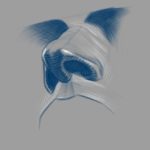
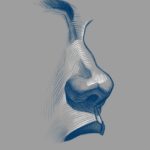
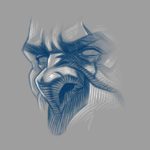
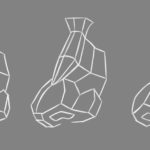
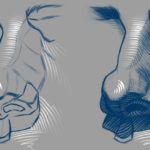
The email sign up is no longer active, i know I’m a bit late, but if there is any supplemental content to what is already posted here I’m definitely interested,
either way, Thank You!
Hi,
Sorry about that. Yes, of course, there are tons of additional lessons already posted on the site and I am in the process of adding more. You can sign up for the newsletter here and get notified when new lessons are published: mydrawingtutorials.com/join
Your explanation is ultimate
Great lesson! Very helpful!!!!!
God bless you! Thank you for offering such good instruction and for free.
This is the best thing, you can give to me. Thank you… I need this to be better 🙂 (Sorry for my english I am not very good at it)
Fantastic..
Thank you!
Much simpler and very effective way to learn the proportions of a human body. Thanks very much.
Very well explained. Thank you very much :o)
I like the way you explain things, your a awesome teacher!
first time try this and first time drawing, i love it, it is amazing!
Estou amando seus tutoriais. Já estou me aventurando,graças a vc.
It’s great Thank you 🙂
I love your videos, you are a wonderful teacher. Thank you
So very thankful for this tutorial. I absolutely love it and I am following your advise regarding homework. I practice this first lesson several times already. Really looking forward to the next one.
I love both the video and the easy to follow written instructions.
M
I liked how you demonstrated it in such a simple way, and stated from the foundation.
I hope we’re going to learn a lot from this you.
Thanks for making these tutorials free for all.
Thanks a lot.
Very good, I’m beginning to believe that I will learn to draw now, thank you so mutch!
Excellent! Thank you.
Thx a bunch. Btw, wat’s your accent??
I’m excited about this, really hope it teaches me to draw figures !
Great site, Thanks for the free lessons…I will apply this method at my Art Class tomorrow.
Look forward to your next lesson.
Thank you so much for sharing. Very informative.!! Looking forward to your next lesson
Thanks for free lesson
GREAT SITE FOR A BEGINNER SO INFORMATIVE AND EASY TO FOLLOW LIKE HAVING A TUTOR IN MY HOME. KIND REGARDS JOHN.
A few years ago I’d have to pay somoene for this information.
thanks again Ethan…..another great article…it’s magic for me..& i am very happy i can draw the human figure through this article & i locked it in my head….it’s very easy way to draw the human figure.& thanks again for this tutorial.
Fantastic way of teaching proportion.
Hi Nathan, thank you for your informative blogs. My interest is in gaining all the information required for future painting. I have spent the past six months working and practicing sketching . A lot of this time has been spent on human figures, mostly adult. I have also put some time into perspective drawing. to get to the point of putting together a reasonable good figure shape I have done a lot of searching to get the proper proportions. Your simplified sketch has done it all so brilliantly. I have copied this and included it among the rest of my notes for future reference. Your site was recommended to me by” Drawing made Easy”.
Thank you,
Vince Coady
Hey,the magic come to an end,very clever ,start trying right away. Thanks Armand.
Ethan, thanks for the lesson! This is really cool and I have never seen the human body described like this. Makes you think differently and I like the results.
Thanks again
Ed
this was my favorite lesson ever offered by you.i really like this one.thanks a bunch